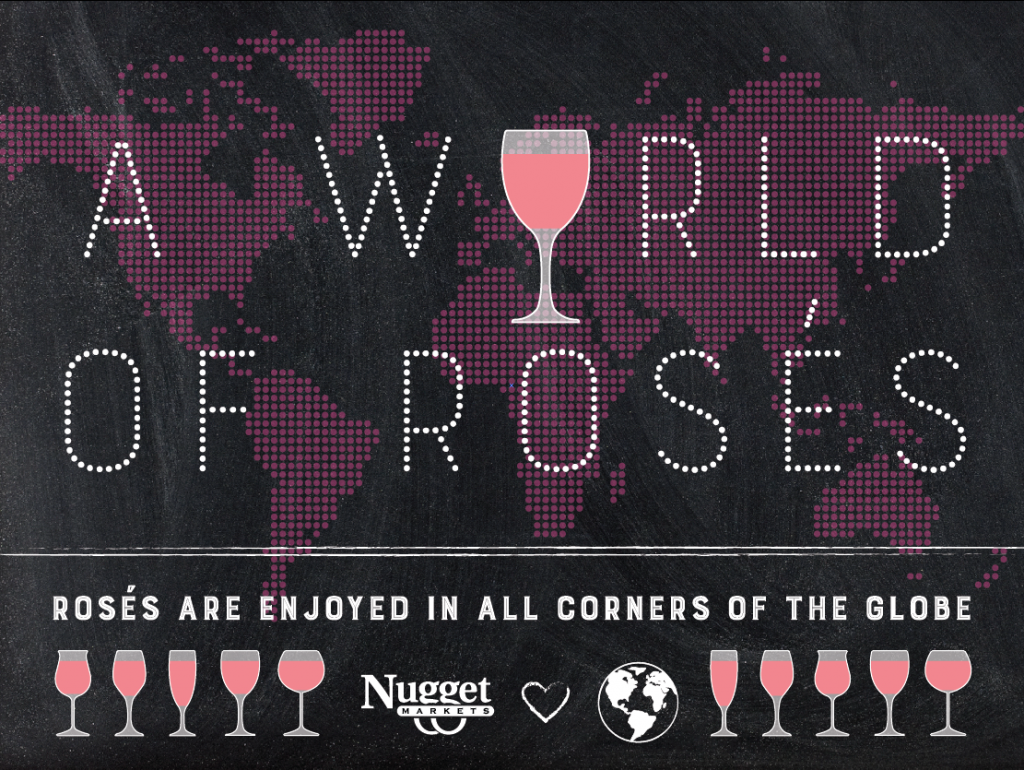Daily Dish the Fork Lift blog

A World of Rosé
Please note that this is an older article. Any products or services pictured or described may have changed or may no longer be available. Thank you for visiting!
Developing the hue of a rosé can be done in a few fashions. A common method used takes place at the beginning of the wine making process when the grapes, yes red grapes with white insides, are crushed and left to macerate with their skins for a short period of time, usually up to three days. The length of time that a grape macerates determines the hue of the wine, be it white, pink or red!
A popular European varietal, rosés are produced and enjoyed all around the world, from France to Korea, South America and of course the USA. Traditionally categorized as being a sweet varietal, similar to a white zinfandel, the rosé has blossomed in variety and is now being made from Pinot Noir, Grenache and Tempranillo. Typically dry and refreshing, rosés are perfect for pairing with grilled chicken, sausage or fish!
Developing the hue of a rosé can be done in a few fashions. A common method used takes place at the beginning of the wine making process when the grapes, yes red grapes with white insides, are crushed and left to macerate with their skins for a short period of time, usually up to three days. The length of time that a grape macerates determines the hue of the wine, be it white, pink or red!
A popular European varietal, rosés are produced and enjoyed all around the world, from France to Korea, South America and of course the USA. Traditionally categorized as being a sweet varietal, similar to a white zinfandel, the rosé has blossomed in variety and is now being made from Pinot Noir, Grenache and Tempranillo. Typically dry and refreshing, rosés are perfect for pairing with grilled chicken, sausage or fish!